50 Words or Less
The Graphite Design Tour AD CQ shaft has unreal consistency. Mid-high launch with mid-high spin. Produced a predictable draw. Modest kick.
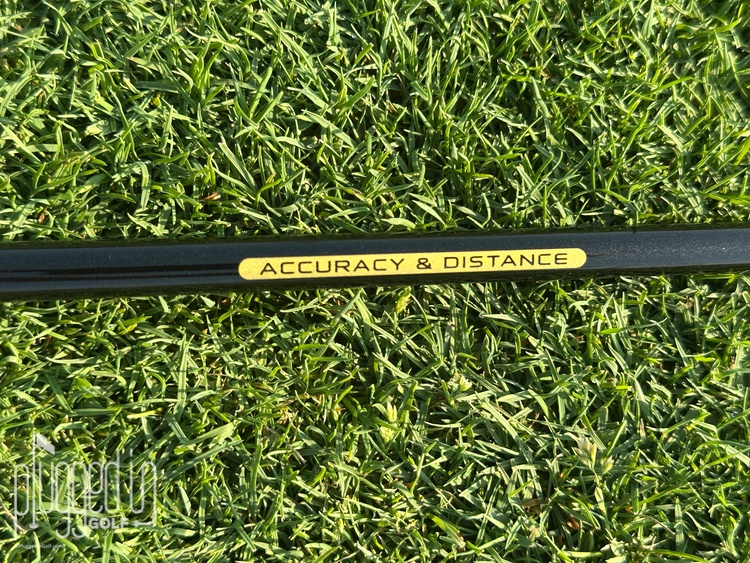
Introduction
With most types of golf equipment, it’s hard for me to be surprised. A big iron can’t disguise itself as a players club and vice versa. Shafts are different, however, as they give no outward sign of what they’re designed to do. If I avoid reading the spec sheet in advance – as I try to do whenever possible – I’m able to get an unbiased first impression and see how it compares to the “on paper” fitting recommendations. My experience with the Graphite Design Tour AD CQ put another point in the column of “You can’t fit golf clubs on paper.”

Looks
The look of the Graphite Design Tour AD CQ immediately brought to mind the Tour AD VF. Both shafts contrast a bold color on the butt end of the shaft with a glossy black mid and tip. In the case of the Tour AD CQ, that bold color is gold with red accents, a color combination I can’t recall seeing on any other shaft.
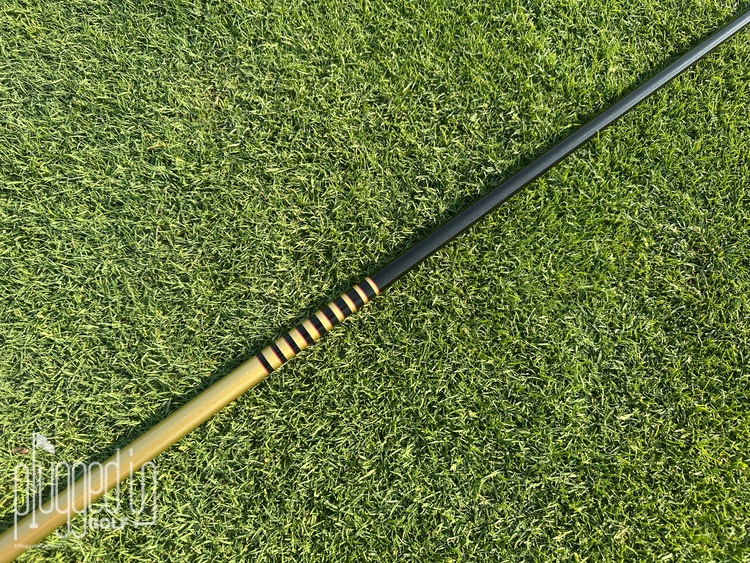
Turning to the graphics, the Graphite Design Tour AD CQ sticks to the script that the company has been using for over a decade. A ring graphic transitions the base color from gold to black. The “Tour AD” logo sits above the rings on the gold portion just about the “Graphite Design” branding. Players that prefer a cleaner address look can get that with a logo down installation.
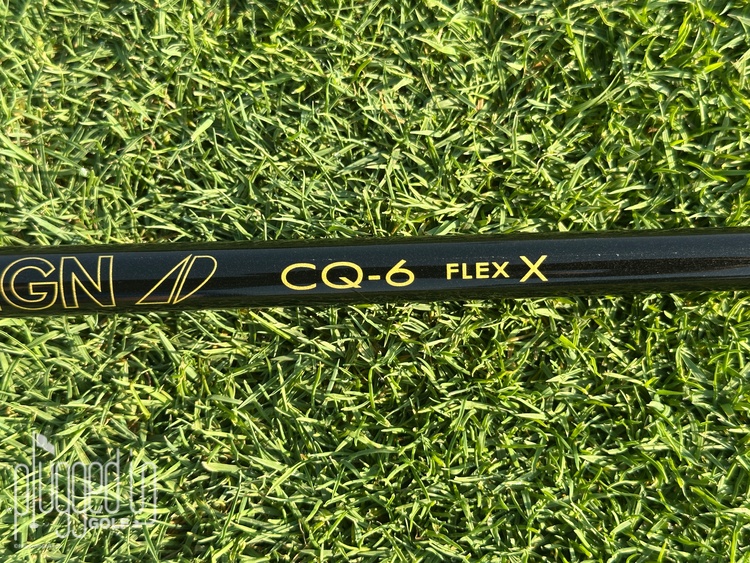
Feel
Testing the Graphite Design Tour AD CQ alongside the new Tour AD FI [review HERE] was an interesting study in how feel is subjective and very hard to quantify. According to Graphite Design, the Tour AD CQ is Firm in the butt and mid sections and Medium+ in the tip. This is softer at every point than the Tour AD FI. However, the Tour AD CQ felt stiffer when wiggling it and swinging it.
Swinging the Tour AD CQ “blind” (not having read the spec sheet), I felt that it was less active than the Tour AD FI with just a modest kick below the grip. There wasn’t a heavy loading, just a quick jab of energy through the ball. Even when swinging hard, I didn’t feel any compromise or twisting in the tip section.
For a more lively feel, check out the Graphite Design Tour AD GC HERE
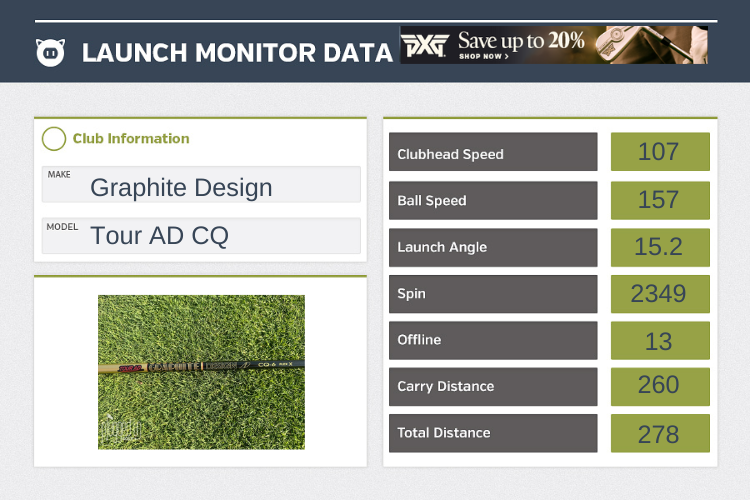
Performance
Without scrolling through the archives, I can’t think of another shaft where the “on paper” fit and the reality were so far apart. Based on the specs, I should not like the Graphite Design Tour AD CQ. Graphite Design has it in the same launch range as the Tour AD IZ [review HERE] but with higher spin – high launch with mid spin. Though this is miles from what I would pick for myself, on the course the Tour AD CQ was fantastic.
In that first “blind” testing session, I felt that the Tour AD CQ handled aggression and mishits quite well, two necessary traits for my driver shaft. It’s not like the Tour AD VF [review HERE] where it laughs at your hard swings and keeps demanding more; it just holds up well when you’re quick at the top or trying to wring out a few extra MPH. Similarly, when I banged one off the toe, I didn’t feel the shaft twist and spray the ball sideways.
When I was swinging well, the results were very predictable. Center-face contact produced a gentle draw. Small mishits tended to be straighter but launched on a similar mid-high trajectory. On the course, I felt like I could aim down the right side with almost no fear. While this is the opposite of my preferred shot shape, it was so consistent that I didn’t mind.
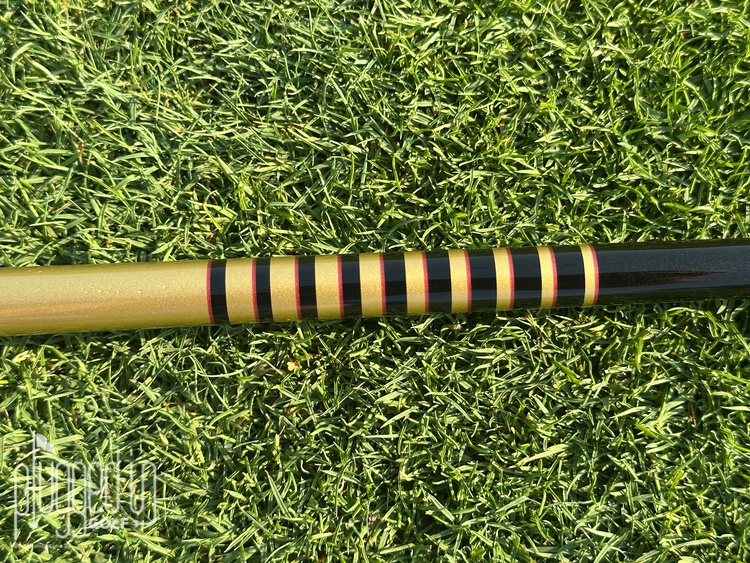
The only knock on the Graphite Design Tour AD CQ is that the spin did creep up at times. This was almost never an issue on the stock draw with solid contact, but the mishits could float a bit. Also, though the Tour AD CQ did let me access a medium cut reliably, the spin on these shots was a little higher than I prefer.
In my final testing session, I stood on the range hitting the Tour AD CQ over and over and finally wrote the following in my notes. “The feel isn’t that exciting. The numbers aren’t insane. But, with real stakes, if I had to pick one shaft to find a fairway, this would be in the upper echelon.”
The Graphite Design Tour AD CQ is available in weights ranging from 40 to 80 grams. Three flexes can be purchased at 40 grams: Lite/Senior flex, Regular, and Stiff. At 50 grams, Graphite Design offers a Lite/Senior flex, Regular, Stiff, and X-Stiff. At 60 grams, the available flexes include Stiff-Regular, Stiff, X-Stiff, and Tour X-Stiff. The heaviest models have fewer options with the 70 gram model coming in Stiff, X-Stiff, and Tour X-Stiff, and the 80 gram version offered only in X-Stiff.
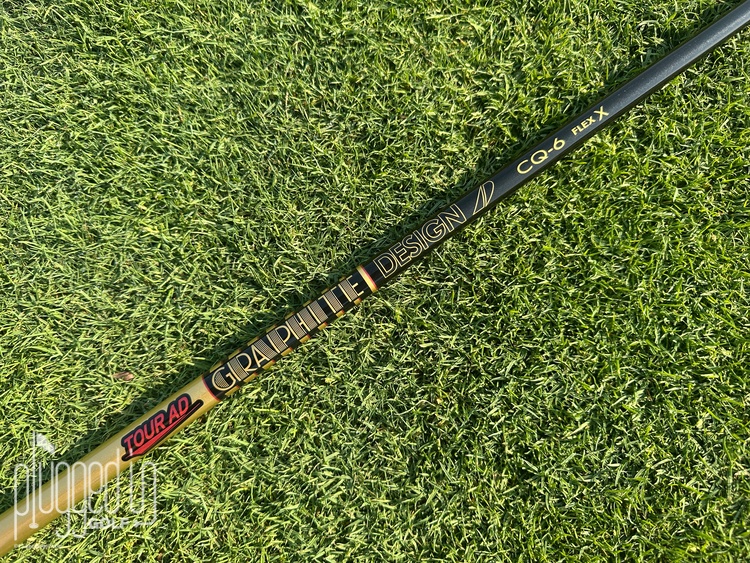
Conclusion
I’m going to keep saying it because it’s the one thought that keeps bouncing around my head: I shouldn’t like the Graphite Design Tour AD CQ. The specs are all “wrong”, the colors don’t match my normal set up, even the name is weird (“CQ” is meant to stand for “ConQuest”). But this is the first shaft in several months that’s threatened my gamer, and it’s a great reminder that fittings happen with human hands on golf clubs not on keyboards.
Visit Graphite Design HERE
He founded Plugged In Golf in 2013 with the goal of helping all golfers play better and enjoy the game more.
Matt lives in the northwest suburbs of Chicago with his wife and two daughters.
- Cobalt Q-6SM Rangefinder Review - December 4, 2025
- PXG Lightning Max-10K+ Driver Review - December 3, 2025
- Bettinardi Antidote SB5 Putter Review - December 2, 2025










One Comment
The CQ feels stiffer because it is. What the GD three point chart doesn’t show you is what the GD five point chart does. It’s a 4 in between the butt and the center which is the the highest of any Tour AD shaft at that point. It also has the lowest kickpoint of any AD. The FI conversely is a 3 at that point and is also the softest point on the FI shaft. The CQ is 2+, 2+, 3, 4, 3 tip to butt and the FI is 4, 4, 3+, 3, 3+ tip to butt. These missing points are crucial to understanding how these shafts play. At least, by the numbers.
They also use a Launch and Draw / Fade Tendency chart rather than the Launch and Spin chart we see. It makes a whole lot more sense to me where the different AD shafts get arranged and grouped on the chart. Everything I found was from JDM YouTube.